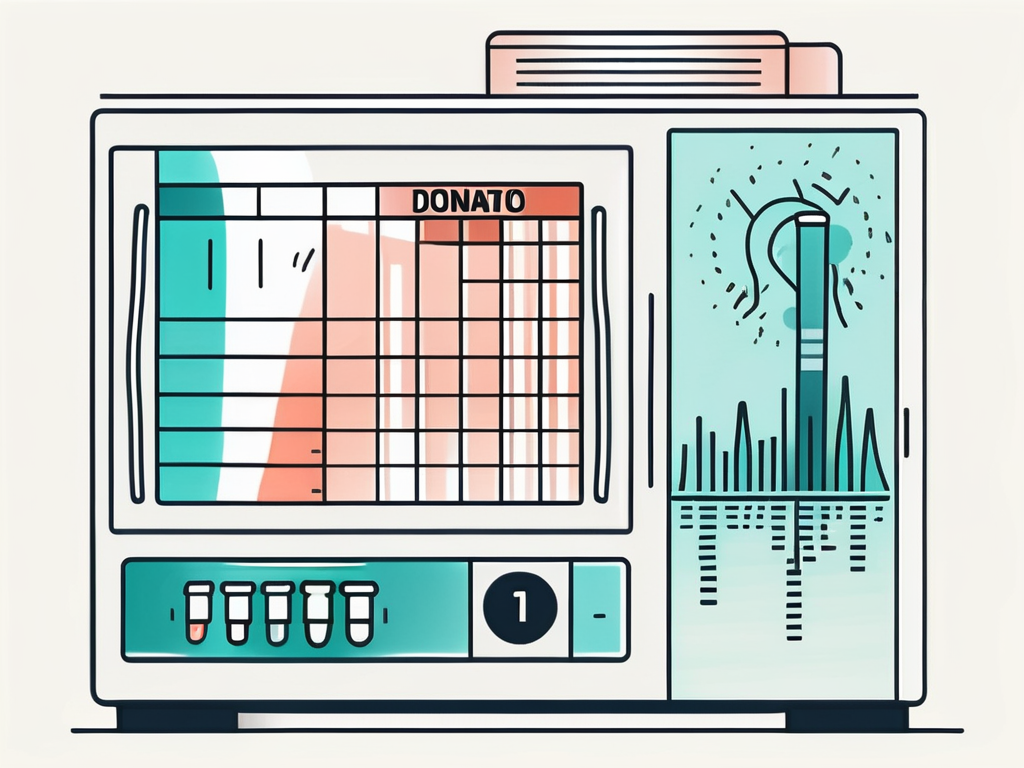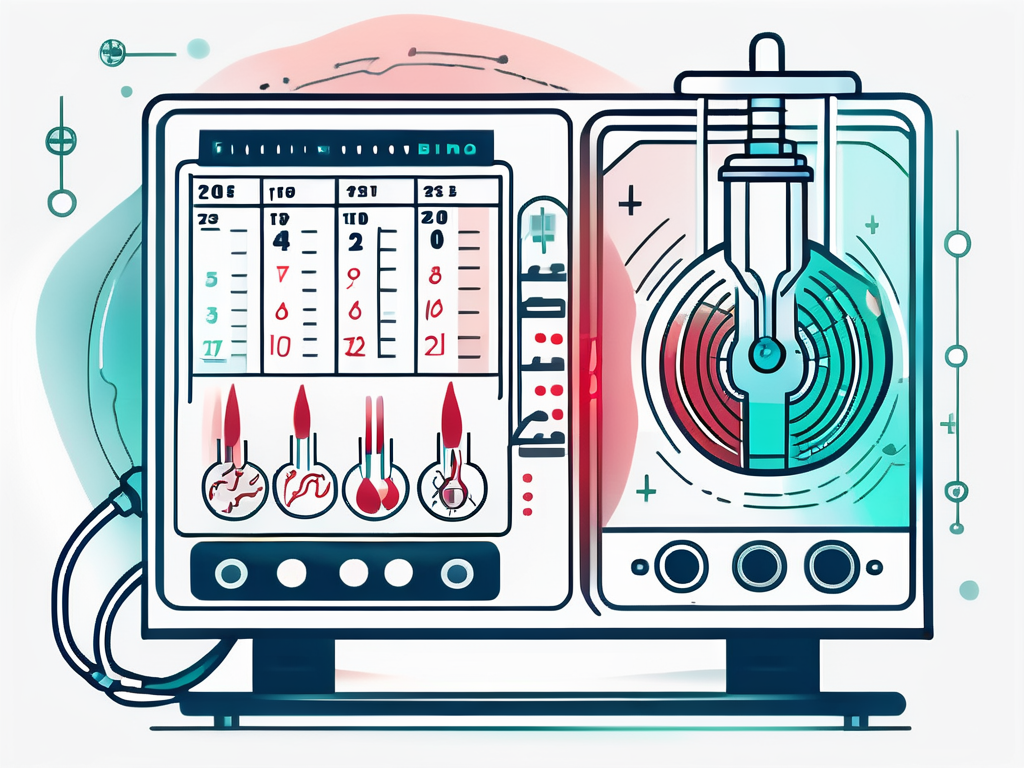Plasma donation is a valuable and life-saving contribution to the medical field. Understanding the process and guidelines for plasma donation can help individuals make an informed decision about how frequently they can donate. In this article, we will explore the various aspects of plasma donation, including the importance of donating plasma, the donation process, the recommended frequency of donation, the health implications, and the guidelines and regulations associated with plasma donation.
Understanding Plasma Donation
What is Plasma?
Plasma is a vital component of our blood that carries nutrients, hormones, and proteins throughout our body. It plays a crucial role in maintaining our health and immunity. Plasma also serves as a medium for the transportation of red and white blood cells and aids in the clotting of blood.

When you donate plasma, you are providing a lifeline to individuals in need. Plasma is used to create life-saving medications for patients with autoimmune diseases, hemophilia, and other conditions. The versatility of plasma makes it a valuable resource in the medical field, helping to improve the quality of life for many people.
The Importance of Donating Plasma
Donating plasma can save lives. Patients with severe burns, immune deficiencies, and other medical conditions often require plasma transfusions as part of their treatment. By donating plasma, you can contribute to the well-being and recovery of these individuals.
The Donation Process
Pre-Donation Screening
Prior to donating plasma, potential donors must undergo a thorough screening process. This includes answering a series of health-related questions and undergoing certain medical tests to ensure their eligibility for donation. Screening is essential to determine the safety and suitability of the donor and to ensure the quality of the donated plasma.
During the screening process, donors are also educated about the importance of plasma donation and how their contribution can save lives. They are provided with information on the impact of plasma-derived medications in treating various medical conditions, from immune deficiencies to neurological disorders. This educational component helps donors understand the significance of their donation beyond the act itself, fostering a sense of fulfillment and altruism.
During the Donation
The actual plasma donation process generally takes about 60-90 minutes. It involves the collection of blood, separation of plasma through a plasmapheresis machine, and the return of red blood cells and other components back to the donor’s body. Trained healthcare professionals closely monitor the entire process to ensure the donor’s comfort and well-being.
Throughout the donation process, donors are encouraged to relax and stay hydrated to help maintain blood flow and facilitate the plasma separation process. The plasmapheresis machine used during donation operates by centrifugation, separating the plasma from other blood components based on their different densities. This advanced technology allows for efficient and safe plasma collection, maximizing the amount of plasma that can be donated in each session.
Post-Donation Recovery
After the donation, it is important to take care of your body to ensure a smooth recovery. Donors are advised to rest, hydrate adequately, and consume nutritious meals to replenish their bodies. Mild side effects such as fatigue or lightheadedness may occur, but they usually subside within a short period of time.
In addition to physical recovery, donors may also experience a sense of fulfillment and pride in knowing that their donation can make a significant difference in the lives of patients in need. Many donation centers provide donors with updates on how their plasma is being used to treat patients, creating a sense of connection and impact that extends far beyond the donation day.
Frequency of Plasma Donation
Recommended Time Between Donations
The American Red Cross recommends a minimum of two days between plasma donations. This allows your body to recover and replenish the donated plasma. However, the exact frequency may vary depending on individual factors such as age, overall health, and the requirements of the donation center. It is always best to consult with a healthcare professional or the donation center for personalized guidance.

Plasma donation is a crucial process that helps save lives by providing essential proteins to patients in need. The plasma collected during donations is used to create life-saving medications for individuals with immune deficiencies, bleeding disorders, and other medical conditions. By donating plasma regularly, you are contributing to the well-being of others and making a positive impact on the healthcare industry.
Factors Affecting Donation Frequency
Several factors can affect your ability to donate plasma more frequently. These include your hemoglobin levels, body weight, and overall health. Maintaining a healthy lifestyle, managing stress levels, and following a balanced diet can also contribute to your ability to donate more frequently.
It’s important to stay hydrated before and after a plasma donation to help your body recover effectively. Adequate hydration supports blood volume, which is essential for the plasma donation process. Additionally, getting enough rest and sleep can aid in the regeneration of plasma proteins, allowing you to donate more frequently while ensuring your well-being.
Health Implications of Regular Plasma Donation
Benefits of Donating Plasma
Besides the satisfaction of contributing to saving lives, donating plasma can have health benefits for the donor. Regular donation can stimulate the production of fresh plasma, which can enhance blood circulation and help maintain cardiovascular health. Additionally, some studies suggest that regular plasma donation may help reduce the risk of certain chronic illnesses.

Furthermore, donating plasma can also have a positive impact on the donor’s overall well-being. The act of giving back to the community and helping those in need can boost self-esteem and create a sense of purpose. Many donors report feeling a sense of fulfillment and happiness knowing that their contribution is making a difference in the lives of others.
Potential Risks and Side Effects
While donating plasma is generally safe, it is important to be aware of potential risks and side effects. These can include temporary discomfort at the donation site, fatigue, and a small risk of bruising or infection. However, rigorous screening and thorough monitoring by healthcare professionals minimize any potential risks.
In addition to the mentioned risks, some donors may experience mild dehydration after plasma donation. It is crucial for donors to stay hydrated before and after the donation process to prevent any adverse effects. Healthcare providers often recommend increasing fluid intake and avoiding strenuous physical activities post-donation to help the body recover effectively.
Guidelines and Regulations for Plasma Donation
Eligibility Criteria for Plasma Donation
To maintain the safety and integrity of the donated plasma, strict eligibility criteria have been established. These criteria consider factors such as age, weight, overall health, and medical history. Different donation centers may have slightly different requirements, so it is important to review the specific guidelines provided by the center you plan to visit.
Age is a crucial factor in determining eligibility for plasma donation. Donors are typically required to be between 18 and 65 years old, although this may vary depending on the donation center. Weight requirements also play a significant role, as donors must meet a minimum weight to ensure their safety during the donation process. Additionally, individuals with certain medical conditions or recent travel to high-risk areas may be deferred from donating plasma to prevent any potential risks to the recipient.
Regulations for Safe Plasma Donation
Plasma donation is regulated by government bodies and health organizations to ensure safety and quality. Donation centers adhere to specific protocols regarding screening, collection, and handling of plasma. Continuous monitoring and regular inspections are conducted to guarantee compliance with these regulations.
Government agencies such as the Food and Drug Administration (FDA) and organizations like the AABB (formerly known as the American Association of Blood Banks) set forth guidelines that donation centers must follow to maintain high standards of safety and quality. These regulations cover every aspect of the donation process, from donor eligibility screening to the testing and storage of donated plasma. By adhering to these regulations, donation centers can provide a secure environment for donors and ensure that the plasma collected is safe for therapeutic use.
In conclusion, plasma donation is a noble contribution that can make a significant impact on the lives of others. Understanding the various aspects of plasma donation can help individuals determine how often they can donate based on their own health, wellbeing, and eligibility. By following the guidelines and regulations, potential donors can ensure a safe and rewarding experience while contributing to the betterment of our medical community. Remember, donating plasma not only helps others but can also have positive health benefits for the donor.